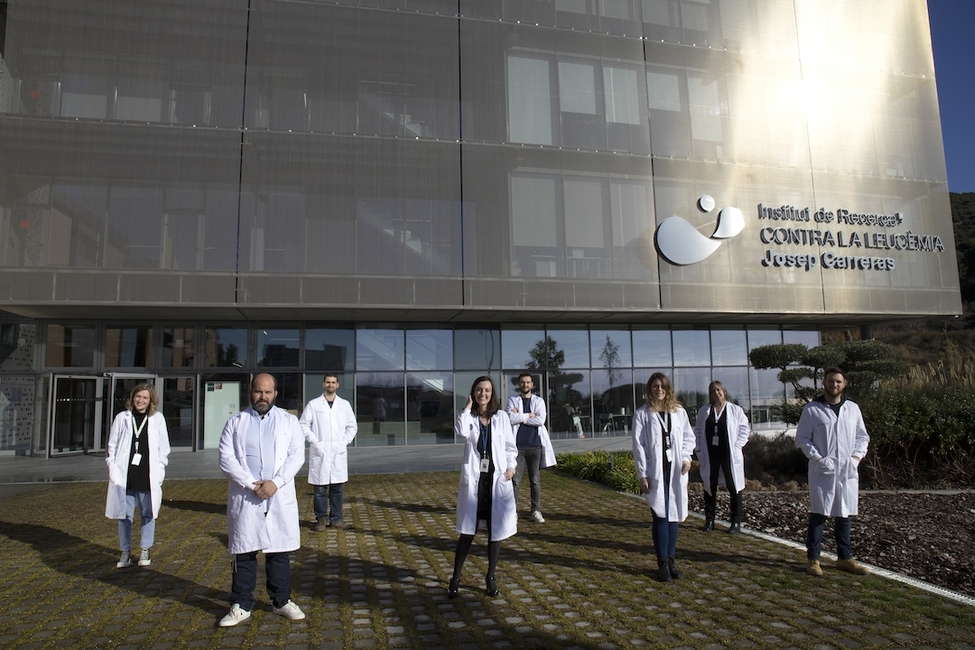New insights on the role of the MAX protein in lung cancer
A team of scientists led by Dr. Montse Sanchez-Cespedes, group leader at the Josep Carreras Leukaemia Research Institute, test the characteristics and the tumour suppressor function of MAX and its role in the development of small cell lung cancer, a very aggressive type of lung cancer. Results show that the cancer cells lacking MAX have neuroendocrine (ASLC1- or NEUROD1-type) characteristics and that their oncogenic capability is independent of the MYC oncogene, involving an abnormal function of the ncPRC1.6 repressive complex.

The MYC protein has been known by oncologists for a long time. As a very fundamental transcription factor, MYC controls the expression of many genes, a great deal of whom involved in cell proliferation and differentiation. Needless to say, these are highly sensitive cellular pathways that need to be carefully controlled. Not surprisingly, when MYC is, by any chance, overexpressed, may lead –and actually it does- to the overactivation of proliferative genetic pathways, resulting in cell transformation and malignancy. Many cancer types show MYC dysregulation, like Burkitt lymphoma and carcinomas of the cervix, colon, breast, stomach and lung.
The story is, however, a bit more complicated. MYC has a partner, named MAX, and both proteins must dimerize –bind together- for MYC to function. Previous studies had found that the absence of MAX totally abolishes MYC activity but, surprisingly, several lung cancers have been found to be MAX-defective, suggesting an alternative way for cancer onset in these tumours.
MYC has been extensively studied in the past, but the role of MAX in lung cancer is still under discussion. In a recent study, published at the Proceedings of the National Academy of Sciences (PNAS), a group of scientists led by Dr. Montse Sanchez-Cespedes addressed this particular question. To this end, and to ensure they were working under realistic conditions, they used cancer cells cultured from MAX-defective patients’ small cell lung cancer (SCLC), instead of a MAX-depleted or knocked-out cell-lines, for the first time. Dr. Sanchez-Cespedes, Cancer Genetics group leader at the Josep Carreras Leukaemia Research Institute, coordinated a team including scientists from the Vall d’Hebrón Research Institute (VHIO), the Barcelona Supercomputing Center (BSC-CNS) and the University of Utah, Salt Lake City. Also, part of the research received funding from the Spanish Association Against Cancer (AECC).
Their results showed that MAX-defective SCLC had neuroendocrine (ASLC1- or NEUROD1-type) characteristics, like MYC promoted cancers, but as expected, MAX absence did indeed abolish MYC activity. How could the same genetic pathways be active without MYC? The answer was MGA, a central protein in the repressive complex ncPRC1.6. The activity of this complex, from the Polycomb family, promotes a closed chromatin conformation, effectively inactivating large regions of the genome. In a way, it is the opposite of the MYC normal activity.
It turns out MGA binds to MAX too, effectively competing with MYC in a normal condition, to establish the ncPRC1.6 complex. The absence of MAX does not abolish the formation of the repressive complex, that remains functional, but its activity is significantly reduced, as shown by the present report. Under this light, scientists lean towards an inefficient repression as the cause for malignancy in MAX-deficient SCLC tumours. To support this idea, the artificial recovery of MAX function in these cells led to a normal activity of the ncPRC1.6 complex, inducing the promotion of cell differentiation gene expression programs.
As a conclusion, results show that MAX behaves as a tumour suppressor, preventing the malignant activity of MGA. Its absence fosters tumour growth, contributing to the SCLC development of a neuroendocrine type.
Reference:
"MAX-mutant small cell lung cancers exhibit impaired activities of MGA-dependent non-canonical polycomb repressive complex”
Paula Llabata, Manuel Torres-Diz, Antonio Gomez, Laureano Tomas-Daza, Octavio A. Romero, Joaquim Grego-Bessa, Pere Llinas-Arias, Alfonso Valencia, Manel Esteller, Biola M. Javierre, Xiaoyang Zhang, Montse Sanchez-Cespedes
PNAS September 14, 2021 118 (37) e2024824118; https://www.pnas.org/content/118/37/e2024824118